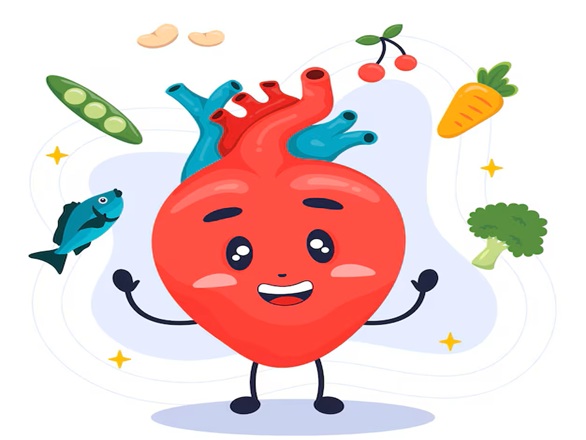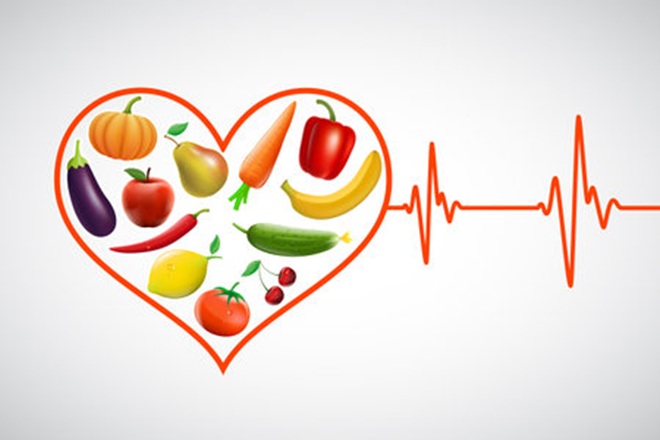In this edition
- The Happiness Factor
- Healthy Heart Grocery Shopping Tips
- Heart Healthy Snacks
About the Newsletter
During this month of love, read about happiness and how to keep yourself as happy as you can. In this article, you can also read about heart healthy grocery shopping tips and heart healthy snacks that you can eat with your loved ones.
The Happiness Factor
By Natalie Mazzullo, M.Ed.
Thomas Jefferson declared that good health was a key component to happiness and said, "Health, without which there is no happiness." He also believed good physic al exercise was important for mental and physical health. Although the latter still holds, science shows that happiness is essential in managing physical and psychological or mental health.
The mind-body connection goes deeper than many realize, and a troubled or unhappy heart can contribute to many health challenges. Research from the Conner Integrative Health Network of University Hospitals in Cleveland states that 80% of visits to primary care doctors are due to or made worse by unmanaged stress.
Happiness leads to healthier behaviors and helps lower blood pressure, reducing the risk of stroke and heart disease. Try these happiness habits for good health.

Keep it moving. Granted, exercise does not always bring out happiness. Studies show that moving more, even in short bursts, a few minutes each day, can give you joy and help you live longer! Although exercise looks different for everyone, find a form that works with your lifestyle and ability, keeps you interested and makes you feel good.
Be mindful. Mindfulness is about letting go of stress and being in the moment. When we practice mindfulness, our thoughts tune into what we’re sensing in the present moment rather than the past or the future. Focus on the activity you are doing now and find joy or happiness in that activity—walking the dog, makina fresh cup of coffee, or enjoying your afternoon show.
Create a happy space. Your environment can be key to your health and happiness. Being in an area you enjoy can help your brain relax, reduce stress and increase happiness. Creating a happy space can be as simple as decluttering or cleaning the area around your favorite chair, coffee table, or dining nook. It can also involve setting boundaries and limits for guests or visitors who drain your energy or joy.
Be grateful. Happy things happen daily. Be on the lookout for them. I recommend making a short list of what to be thankful for daily. You can even share your grateful thoughts in a letter or postcard with someone you are thankful for, sharing your happiness with the recipient.
Eat healthier. Increasing your daily fruit and vegetable intake can improve your heart health and make you happier. A 2022 study in the British Journal of Nutrition found that people who ate three more servings of fruits anvegetables daily experienced increased happiness, life satisfaction and well-being.
Seeing your life more positively can benefit your health and happiness. Being happy doesn’t just make you feel better; it improves your overall health, helps you eat healthier, be more active and and even sleep better.
Don’t worry, be happy!
Healthy Heart Grocery Shopping Tips

Making better nutrition decisions to support a healthy heart starts by deciding what to eat, which often happens at the grocery store. Using the nutrition label when grocery shopping helps us choose the best options to support our hearts. The nutrition label provides a % Daily Value (DV) that estimates how much of a nutrient found in a serving of one food item contributes to your daily dietary needs for that nutrient.
Generally, we want to look for:
•Lower % Daily Value (DV) in saturated fat, sodium, sugars added
•Higher % Daily Value (DV) in dietary fiber and potassium
Here are some heart-healthy grocery shopping items you can add to your grocery list!
- Produce – pre-cut fruit and vegetables or pre-washed items can save on time
- Lean meats like boneless, skinless poultry; pork or steak loin cuts; flaky fish (e.g., tilapia and cod)
- Low-sodium deli meats – look for the phrases “no salt added” or “lower sodium” on the packaging
- Whole grains (pasta, bread, rice, cereal) – aim for 5g of fiber or more per serving
- Low-sodium or no-salt canned vegetables – if low-sodium options are not available, try draining and rinsing the product under water to remove some of the salt
- Canned fruit – look for options in 100% juice rather than syrup
- Canned meat like 98% fat-free chicken, pink salmon or albacore tuna
- Herbs, seasonings, spices – using these can help reduce salt intake while keeping food flavorful
- Dairy products – look for reduced fat and no sugar-added options
- Frozen produce and meat products – these items offer the same nutrients as their fresh counterparts -just make sure the % DV of sodium is low
American Heart Association Grocery Shopping Tips
Heart Healthy Snacks
The American Heart Association suggests trying these healthy, nutritious snacks.
Munchies that Crunch
•Apples and pears •Carrot and celery sticks •Bell pepper slices •Zucchini or cucumber circles •Roasted chickpeas •Broccoli and cauliflowerflorets •Air-popped popcorn •Rice cakes and whole-graincrackers •Nuts and seeds
Rethink Your Drink
•Plain or sparkling water(Add some fruit and herbsto it for added flavor) •Fat-free milk or plainsoymilk •Unsweetened tea or coffee •4 oz. 100% fruit juice •Low-sodium tomato ormixed vegetable juice

Snacks that Satisfy
•Whole-grain toast withpeanut or almond butter •Cherry tomatoes withhummus •Low-fat or fat-free cheese •Plain low-fat or fat-freeyogurt (pair with fruit) •Fruit and veggie smoothie •Whole-grain crackers with canned tuna or salmon.
Curb Your Sweet Tooth
•Canned fruit (in natural juice or light syrup) •Thin slice of angel food cake or homemadebanana-nut bread •Baked apple •Fresh fruit salad •Frozen banana •Raisins, dates, figs and other unsweetened dried fruits
•Frozen grapes •Fresh fruit salad
Visit www.heart.org for more information


